
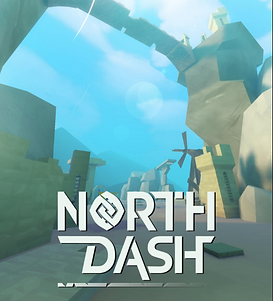
Production of a level
The level design was led by the desire to bring narrative elements to the player and create identities to every rooms. As level and narrative designer, my role was to design the blockouts and to include the narrative environmental elements in each level to make our world coherent. Then, the artists create the final version of the level.
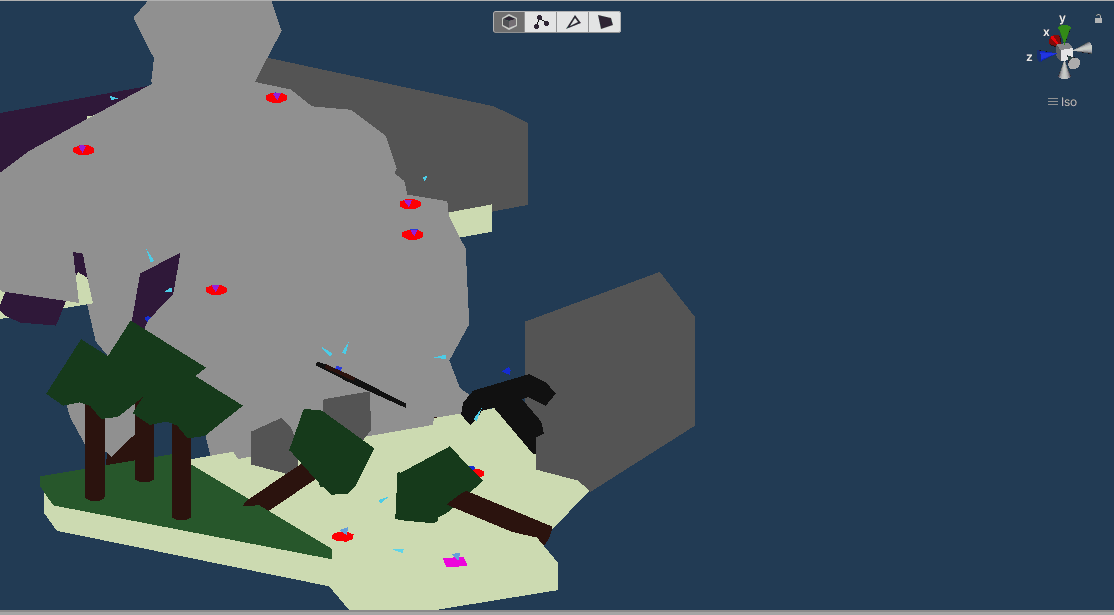
Blockout : Elite room 2.
We can see 2 dead Giants who killed each other. One tried to defend the temple behind him (now fallen into ruins). There is a huge anchor stuck in the land.
What happened to these Giants? To this world?
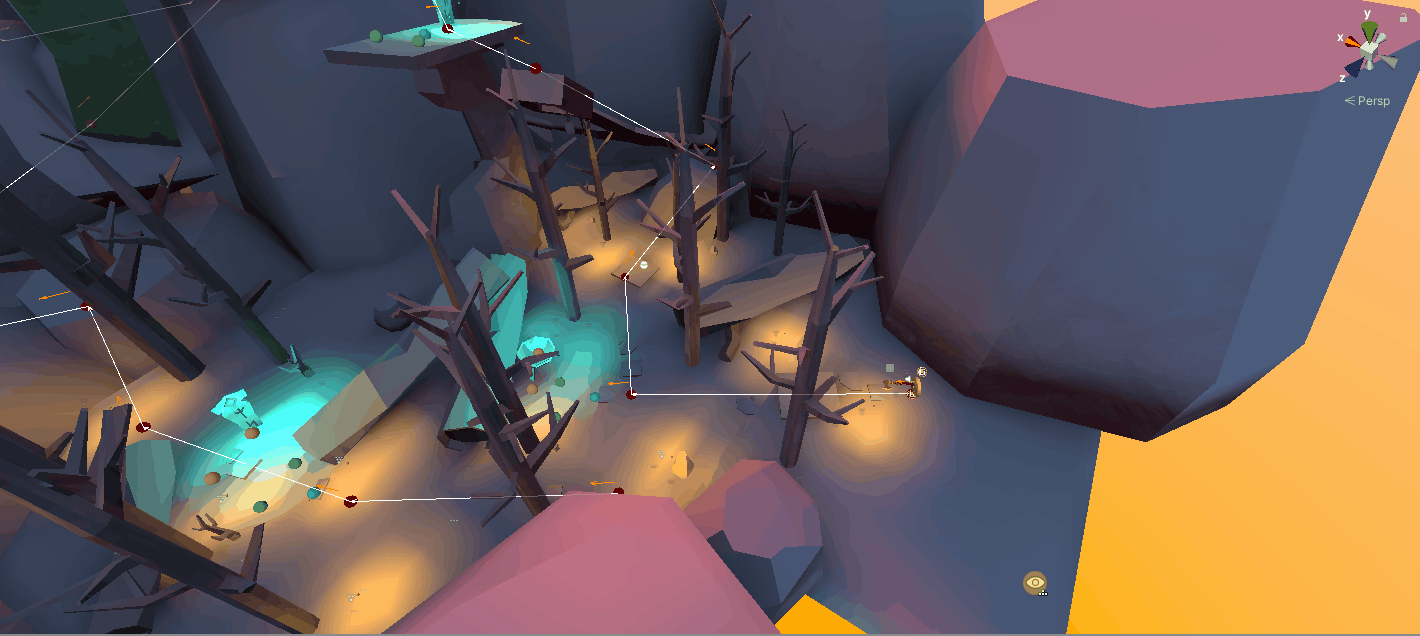
Final version: The initial intention led the artists to build the level. The player's path is already decided on the blockout and set with the node at last.
When the final version of the level is over, I add the final touch: the node balancing. Each rooms includes nodes which define the specific events and the number and difficulty of fights. These nodes are also responsible of the player's path through the level. I can create different path to create many levels from one environment.

The player's path is defined by the location of the node. He moves from node to node.

The nodes define the parameters of the fights. Up to 4 enemies can appear during a fight. We can also choose the type of enemy.
Variety of levels
There are some type of rooms: Combat, Elite, Event, Merchant and Boss. These types include their own specific features. One of my role was to create the room variety by designing new features and environment.
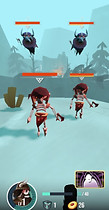


The Battle Room, Elite Room, and Boss Room include fights. Elite rooms are more difficult, but a reward chest awaits the player. The boss is the final step to reach the end of the level.

The player can buy items when he crosses one of the merchant's rooms.

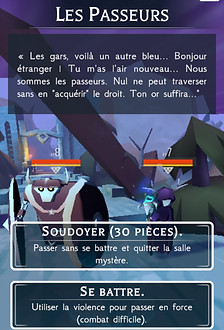
Event halls have specific characteristics. For example, here the player can choose to bribe enemies or fight them. But they are much stronger than the other enemies and the player risks to be defeated.
The distribution of the rooms on the map allows the player to choose his path. It's set randomly, but we control the spawn rate of room types in each row of rooms.
Even though a lot of rooms and blockouts were made, the short production time didn't allow us to put all the rooms in the game. In fact, only half of them could be integrated.
Tutorial
I was in charge of the tutorial which means two things: introduce the player to our universe and teach him how to play without breaking the immersion.
The game is about dead viking (Einherjar) who crosses a Valhalla, the dead warrior's paradise, devastated by Ragnarök, the end of the world. The tutorial followes a Viking warrior into battle who finally dies and reaches Valhalla, the place where the game takes place.
"This battle will never end ... It is not the time to be weak, I have to get back to the fight!"
Hold to guard!
Swipe to attack!
Tap on an enemy to launch a projectile!
"A Berserker! He's way too strong for me..But if I have to die, it will be with glory! For Odin!"
"Is this ... me? My body? Does it means that..I'm dead?"
"This light..this door ... what is ..."
I was the designer of the tutorial, which involves the production of a document that explains in detail the scenes and the intentions. Then the artists made the level based on these instructions.